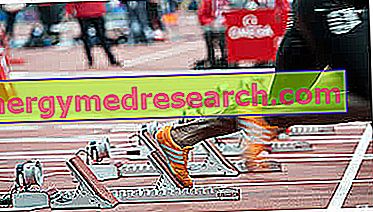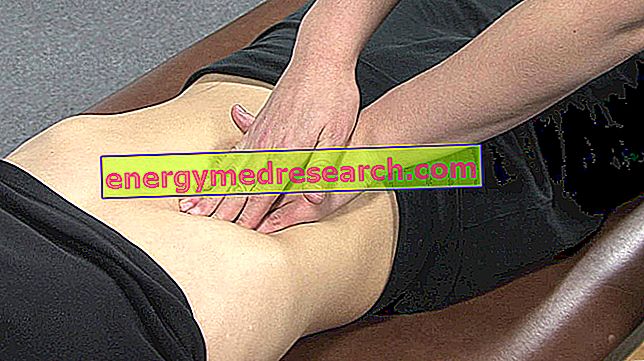Running technique

The technique of fast running in athletics includes two phases:
- Flight phase
- Support phase
Technique of the flight phase in the technique of fast running
Flight is the sequential phase of the motor impulse; it is the initial moment, in which the supporting limb extends and the athlete abandons all contact with the ground, while the free limb (which in the meantime has reached the highest point of the thigh) begins its distension and prepares itself for the new phase of support. In flight, the center of gravity reaches the highest point of the race.
Technique of the support phase in the technique of fast running
In the support, the foot makes contact with the ground in the external part of the metatarsus, slightly ahead of the vertical of the knee; the cushioning phase begins at this time. For a short period of support, the foot is more advanced than the hips, apparently constituting a negative element for advancement but still essential for loading the elastic force of the pushing limb (gluteus, femoral quadriceps and triceps sural).
Now begins the second phase of support, support ; the heel is lowered by touching the ground and the speed of advancement of the hips depends on the closure of the free limb which, acting as a flywheel, allows to maintain a high speed of advancement.
By moving the center of gravity beyond the support, the pushing phase begins; the kinetic chain previously stretched and loaded, through a rapid and elastic contraction, gives an impulse to the system and increases the speed; the supporting limb extends completely allowing the free one to reach the opposite thigh and allowing the start of a new cycle.
Trunk and upper limbs in the technique of fast running
The trunk assumes an almost vertical position, but more inclined at the start and more upright in the launched phase (about 10 ° of inclination); the arms perform an alternating movement useful to optimally manage the horizontal component of the thrust, compensating for the vectorial movement of the lower limbs which would lead to a rotation of the trunk and an oscillation of the shoulders. The arms absorb and limit the eccentric thrusts produced by the lower limbs, directing the advancement of the hips; the angle of the elbow closes during the ascent forward up to above the shoulders and is open in the descent to reach the great trochanter. All in the opposite phase (therefore asymmetric) to the lower limbs.
NB . In the 400m, the free limb can be recovered with the foot abandoned in the top-back, optimizing the effort in the race.
Starting technique from the block
A quick reaction time and a correct positioning of the body segments are essential to develop a good acceleration in starting from the block, but a too excited and reactive start is not always advantageous to the development of high average speeds.
To learn the starting technique from the block some exercises are used, or rather, departures are made from different positions:
- Departures in feet from a sagittal divaricata with an erect bust, with an unbalanced trunk forward
- Departures in feet from a sagittal divaricata with a torso bent forward, with the trunk tilted forward
- Departure from the collected position
- Starting from the crawling position.
Through these exercises it is therefore possible to establish:
- The dominant limb, which must be placed anteriorly
- The spreading of the legs at the start, not far from the size of a foot between the front heel and the tip of the rear
- Correct loading, for closing the ankle corners and just bending the legs in standing starts
- Advance and rapid flexion of the hind limb upward, towards the chest
- Proper dynamism of the arms that assist the movement of the legs.
The collected position is therefore preparatory to the use of the blocks, which are introduced using only the rear one first and the front one later.
When using both toe boards, they must maintain a low inclination to ensure comfort and balance at the start; in the "at your seats" position, the front foot is positioned about two feet from the starting line and the rear one as described above in a gathered position, while the body is placed in a position on all fours (bending the shoulders forward, with the arms parallel and spread out, touching the knee of the forward leg, and resting the hands with the thumbs in the back). At the "ready", the athlete lifts the pelvis by squeezing both heels down; the front limb has an angle between leg and thigh of about 90 ° and the rear one of about 135 °. Before the shot, it is important that the athlete focuses attention on the imminent advancement of the hind limb which will facilitate the intervention of the contralateral upper limb on an already moving mass; the subsequent recall of the free limb will facilitate the rapid extension of the thrust one while the arms snap into an adjuvant swing. The arm corresponding to the front leg flexes and does not rise beyond the head, while the upper one is projected violently back in coordination with the other leg; the bust should not rise immediately, but follow a line almost parallel to the ground to align itself only at a later time, since the passage from the collected position to the launched one must take place progressively.
Bibliography:
- The track and field coach's manual - Part one: general information, races and march - Studies and Research Center - pag. 21:38.



